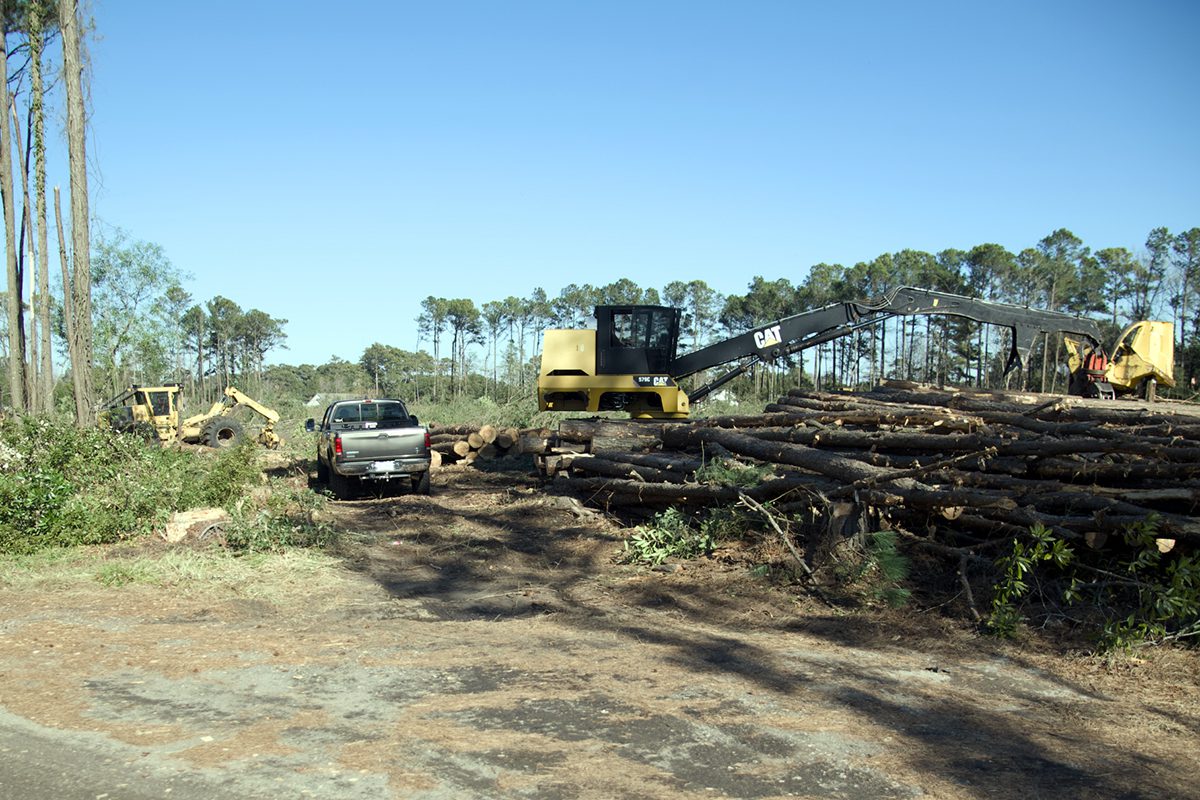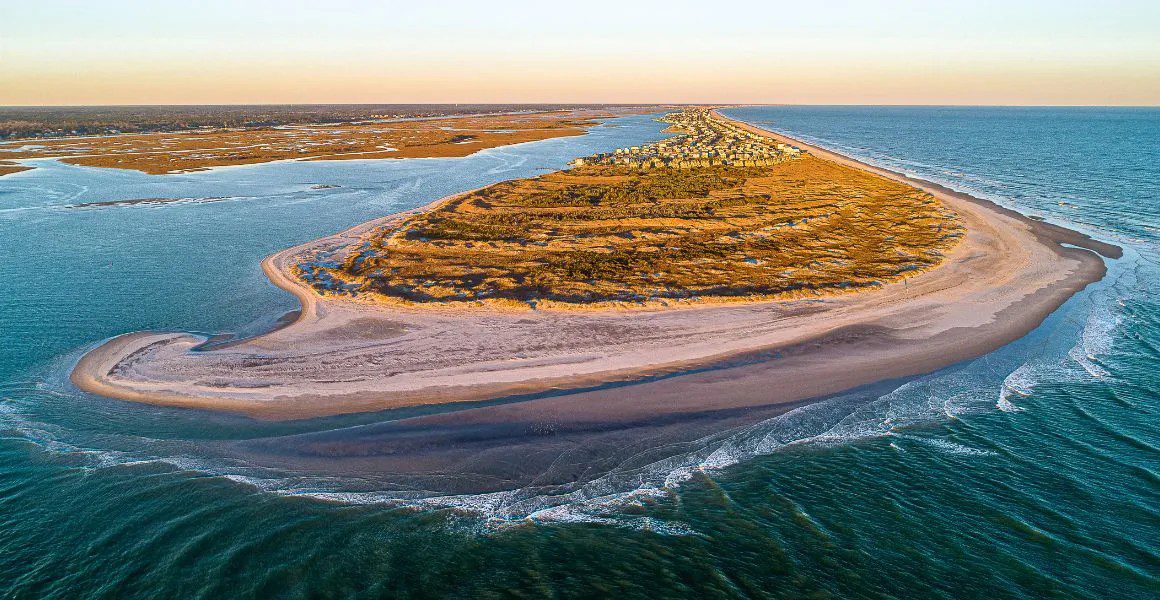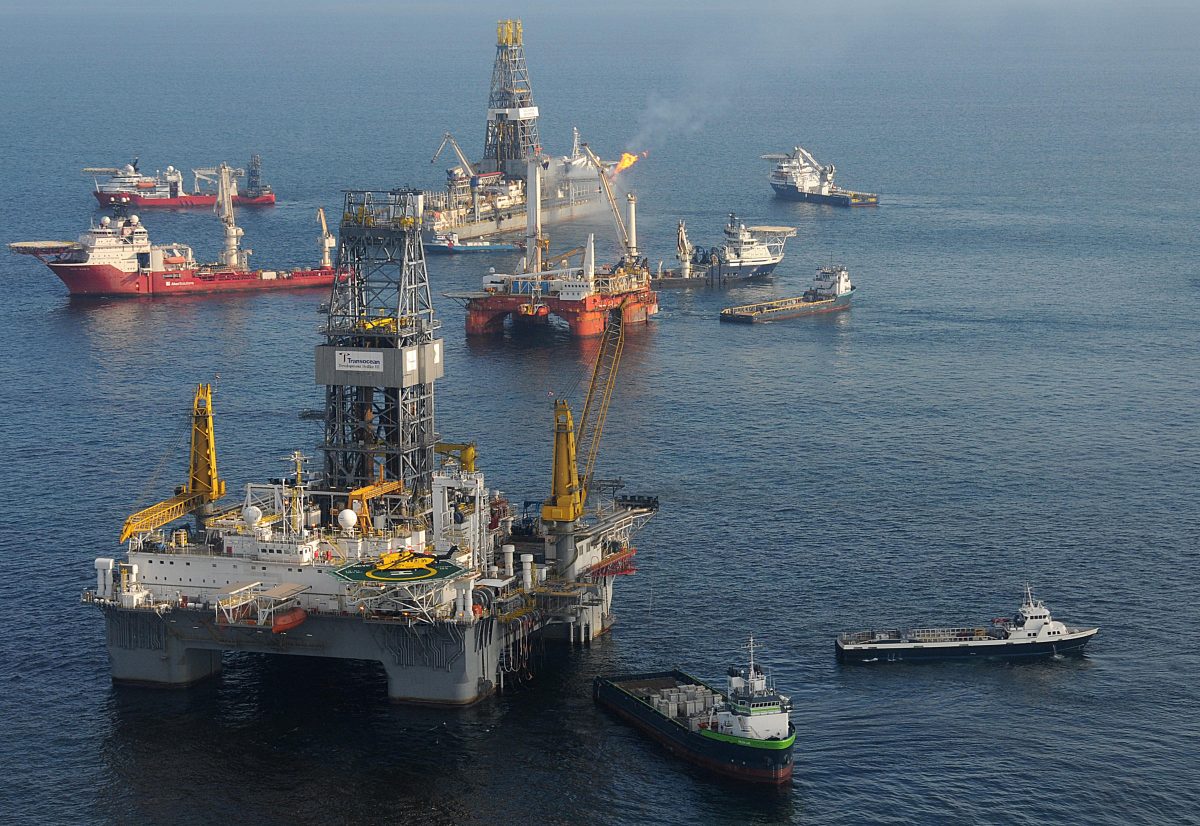OCEAN ISLE BEACH – Ocean Isle Beach has received a federal permit to build a 750-foot terminal groin, construction of which is expected to begin later this year.
The Army Corps of Engineers released both a record of decision and the permit for the project Feb. 27.
Supporter Spotlight
The North Carolina Division of Coastal Management issued the Brunswick County beach town in November a Coastal Area Management Act, or CAMA, major permit for the hardened shoreline erosion control structure.
Town officials are now in the process of selecting a contractor and discussing how to pay for the project, the initial construction cost of which is $5.7 million. The 30-year cost of the project is an estimated $45.8 million.
“We’re working on that during our budget process,” said Daisy Ivey, the town administrator.
Ocean Isle Beach Mayor Debbie Smith said the town has been saving to pay for the project.
“We’ve searched for a solution for chronic erosion at the east end for a long time and we think this will be that solution,” Smith said of the terminal groin.
Supporter Spotlight
Town officials anticipate construction to begin in November.
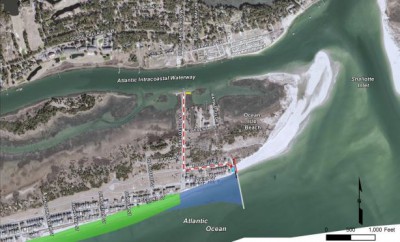
For two decades, the town has been battling chronic erosion at the east end, where homes have been lost and roads repeatedly repaired.
The town has tried to curb erosion by installing a sandbag revetment and building up dunes. Public accesses have had to be replaced and water and sewer lines relocated, costing the town more than $3.5 million, according to the town’s environmental impact study, or EIS, on the terminal groin project.
The project calls for placing about 264,000 cubic yards of sand dredged from Shallotte Inlet behind the structure. Dredging and fillet, or sand placed behind the terminal groin, is scheduled to take place about every five years.
The terminal groin, a wall-like structure built perpendicular to the shore, would be designed to mitigate erosion along 3,500 feet of the town’s oceanfront shoreline west of Shallotte Inlet.
The proposed project will have a 300-foot shore anchorage section made of either concrete or steel sheet piles. The pile will tie into a mound of large armor rock that will stretch 750 feet seaward.
Three signs for navigational aid must be put up in conjunction with the project, a requirement of the U.S. Coast Guard.
The U.S. Fish and Wildlife Service’s biological opinion determined the project may affect, but would not jeopardize, the existence of several endangered species, including the piping plover and loggerhead nesting sea turtles.
Federally designated essential fish habitat, or EFH, is expected to be adversely affected, according to the National Marine Fisheries Service. Habitat will be modified in the groin footprint and during dredging as well as in disposal areas, according to the record of decision.
One of the special permit conditions establishes a work moratorium between April 1 through November 15 to protect fish and protected species during seasonal migrations.
Opponents of terminal groins argue that the structures cause erosion to beaches down-drift of a groin.
According to the Corps’ record of decision, the terminal groin “may increase erosion along the easternmost point” of Ocean Isle Beach, but not impact the shorelines in Holden Beach and Sunset Beach, beach towns immediately east and west of Ocean Isle Beach.
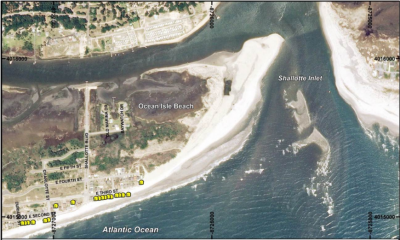
The permit requires the town to monitor shorelines west and east of the terminal groin, Shallotte Inlet, and Holden Beach.
If the project causes an increase in erosion along neighboring shorelines, the town will have to “implement terminal groin alterations” before the beach can be nourishment, according to the permit conditions.
Ocean Isle Beach will be the second town in the state to build a terminal groin since lawmakers in 2011 repealed a long-time law banning hardened shoreline erosion control structures.
Before 1991, only two terminal groins existed on the North Carolina coast – one at Fort Macon at Beaufort Inlet and one at the Pea Island Wildlife Refuge at Oregon Inlet.
In 2015, Bald Head Island became the first beach community to build a terminal groin after the General Assembly’s 2011 decision to allow up to four groins to be built on the coast. Legislators later made an allowance for two more terminal groins to be built, bringing the total to six in the state.
Though Figure Eight Island in New Hanover County was the first to submit an EIS to the Corps for review to build a groin on the north end of that island, it has yet to receive a federal permit.
A vote of the private island’s property owners last year did not net enough support to move forward with the proposed project. It is unclear whether Figure Eight’s Homeowners’ Association’s board of directors will bring it up for a future vote.
Holden Beach is also exploring the possibility of building a terminal groin. That town is waiting for the release of the final EIS on its proposed project.
North Topsail Beach is in the early stages of pursuing a terminal groin project for the north end of Topsail Island.



